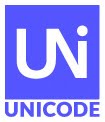- Hanifi Rohingya, a script in current use in Myanmar and Bangladesh
- Nandinagari, a Brahmi-based historic script formerly used in South India
- Old Sogdian, a group of historic scripts formerly used in Kazakhstan, Pakistan, and Western China
- Sogdian, derived from Old Sogdian, a group of historic scripts formerly used in Central Asia
Showing posts with label Berkeley. Show all posts
Showing posts with label Berkeley. Show all posts
Wednesday, December 14, 2016
Adopt-A-Character Grant to Support Indic Scripts
Friday, June 3, 2016
Encoding the Mayan Script: your Adopt-a-Character sponsorships at work
Thanks go to our sponsors for providing funds to support this grant. Adopting a character helps the Unicode Consortium in its goal to support the world’s languages.
Mayan hieroglyphs were used from 250 BCE until the 1500s. Mayan textual records include historical, literary, religious, and mythological information, as well as a sophisticated mathematical system on par with that of the Romans. Mayan astronomical records continue to capture the attention of astronomers today. Including Mayan hieroglyphs as Unicode characters will allow them to be used on computers around the world. See more about Mayan.
Mayan is a complex script, requiring special support in layout and presentation. The first phase is a catalog and analysis of the Dresden codex, resulting in a draft set of Unicode atomic signs and composition mechanisms needed for full Mayan text. The second phase is based on that analysis: preparation of a proposal for layout and presentation mechanisms in Unicode text, using those atomic elements. These two phases are to be completed in 2017.
Subscribe to:
Posts (Atom)



